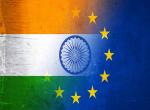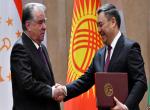National elections in Southeast Asia, namely in Indonesia, Cambodia, Thailand, within the last year have brought about significant political and policy shifts. These elections were consequential, leading to regime changes and shifts in policy priorities. While the specific priorities varied across these countries, common themes emerged such as ensuring political stability and maintaining social order were paramount across all nations. Prioritizing economic development and recovery in the post-COVID era was a key focus. And balancing foreign policy to preserve national sovereignty while navigating the complex geopolitical landscape, particularly the strained US-China relationship, was a critical consideration.
Economically, Southeast Asian countries exhibited mixed growth rates in the third quarter of 2024. [1] Vietnam achieved robust growth of 7.4%, its third-highest in five years. Singapore also experienced strong growth at 5.4%, its best quarterly performance since 2022. Thailand also recorded accelerated growth. Growth moderated in Indonesia, Malaysia, and the Philippines. For Indonesia, growth moderated slightly to 4.95% from 5.05% in the previous quarter, primarily due to sluggish household consumption. Growth eased to 5.3% from 5.9% in the previous quarter, despite strong exports and investment in Malaysia. And in the Philippines, the growth slowed to 5.2% from 6.3%, primarily due to weaker exports. Strong export performance was a key driver of growth across several economies, particularly in Indonesia, Malaysia, Thailand, and Vietnam. Investment activity surged in several countries, driven by infrastructure projects, capital investment, and FDI inflows. And tourism recovery contributed significantly to growth in Thailand and Vietnam.
While the Southeast Asian economies are resurging, challenges remain. It is predicted that the election of Trump as the President is set to influence Southeast Asian markets significantly, with potential changes in trade policies, investment trends, and geopolitical strategies. [2] The economic growth of nations like Vietnam, Malaysia, and Thailand heavily relies on exports to the US. Therefore, any changes in US trade policies could present substantial risks. For instance, a protectionist administration might impose higher tariffs on Southeast Asian exports, particularly affecting sectors such as textiles, electronics, and agriculture. Such measures could diminish these countries' competitiveness in the US market, especially as Vietnam establishes itself as an alternative manufacturing hub to China.
Further, the ongoing US-China rivalry has further complicated the economic landscape in Southeast Asia. As the US adopts a hardline stance against China, countries in the region have to balance their economic interests with both superpowers. Failure to navigate these relationships carefully could result in pressure to align with either the US or China, disrupting existing supply chains, particularly in critical sectors like technology. But here Southeast Asian countries also have an opportunity to benefit from the US-China tensions because US firms might shift production to the region as part of a “China+1” strategy. This involves maintaining operations in China while diversifying manufacturing to neighbouring countries. Such a shift could boost investment in markets like Vietnam and the Philippines. In terms of regional security, a US administration that prioritizes strengthening alliances in the Indo-Pacific could enhance cooperation with ASEAN nations, particularly in issues like the South China Sea. Increased engagement could stabilize security in the region and counter Chinese influence.
In the past few years, China’s hegemonic ambitions in the South China Sea have increased. The Philippines has been a frequent target in the last 18 months. [3] In response, the Philippines has adopted a firm stance to protect its sovereignty with a focus on military modernisation and enhancing foreign policies. In November 2024, the Philippines also passed laws to define its maritime zones in alignment with international law, such as the Philippines Maritime Zones Act and Archipelagic Sea Lanes Act, [4] challenging China’s claims. Even in December 2024, Philippines deployed the U.S. medium-range missile system, Typhon's in a military exercise demonstrating its deterrence in the SCS.[5]
Vietnam has also taken a cautious stand against China's hegemony in the South China Sea. To counter Chinese aggression, Vietnam participated in joint exercises and maritime security capacity-building with the US, as well as drills with the Philippines and naval exercises with Indonesia in 2024. [6] According to Hanh Nguyen, Viet Nam is following a strategy of "shadowing and tracking" rather than publicly highlighting Chinese encroachments. [7] The result of the cautious approach is due to the asymmetry in the trade and geopolitical situation for both the countries. After the ‘brutal attack’ on Vietnamese fishermen in October 2024, both the states agreed to calm tensions in South China Sea as SCS is crucial waterways for the trade. [8] Not just in maritime security, Vietnam focuses on economic security as well. There was a visit by the President of Vietnam in August of 2024 to China with a focus on enhancing economic and investment cooperation along with enhancing cross-border railways, agricultural produce, and cooperation on local currency settlement and swaps. [9] In October 2024, both the countries signed 10 agreements ranging from agriculture cooperation to cross-border QR code payments.[10]
However, Vietnam also strategically focuses on diversifying from China by collaborating with major US firms, particularly in AI and semiconductors, and has pursued diplomatic upgrades with Washington. After visiting Beijing, President of Viet Nam, To Lam also travelled to the U.S, where he appeared at Columbia University, and Vietnamese authorities approved the establishment of a New York Times office in Ho Chi Minh City, signalling Hanoi's intention to strengthen ties with the US. According to Nguyen Khac Giang, visiting fellow at ISEAS-Yusof Ishak Institute, “Geopolitically, Hanoi still needs Washington to counterbalance Beijing’s influence in the region.” This highlights how Vietnam is navigating its foreign and economic policies to safeguard domestically and regionally and also grow in a global stage.
Engagements between India-Southeast Asian Countries in 2024
India and ASEAN countries commemorated a decade of India’s Act East Policy at the 21st ASEAN-India Summit, held in Vientiane, Laos, in October 2024. This landmark summit reaffirmed the strong and multifaceted nature of the ASEAN-India Comprehensive Strategic Partnership. The summit focused on "Enhancing Connectivity and Resilience," with PM Modi unveiling a 10-point plan to further strengthen cooperation between India and Southeast Asian countries. The summit acknowledged the remarkable progress made under the Act East Policy, with India-ASEAN trade doubling to exceed USD 130 billion. Recognizing the need to further enhance economic cooperation, the leaders emphasized the importance of a timely review of the ASEAN-India Free Trade Agreement (AITIGA). To foster deeper cultural understanding, the year 2025 was declared the ASEAN-India Year of Tourism, and efforts were made to expand educational exchange programs. Building upon the success of the previous ASEAN-India Plan of Action, the leaders agreed on a new framework for cooperation, the ASEAN-India Plan of Action (2026-2030), designed to maximize the potential of the partnership.
Additionally, at the 19th East Asian Summit, PM Modi highlighted ASEAN's pivotal role in the Indo-Pacific region as it aligns with India’s Indo-Pacific Vision and QUAD cooperation. [11] PM Modi reaffirmed India's support for the EAS mechanism, and also invited member countries to a Heads of Higher Education Conclave at Nalanda University, celebrating its revival with EAS support. PM Modi also stressed on the threats posed by terrorism, cyber, and maritime challenges, urging collective action and expressed full support for Malaysia as the new Chair of ASEAN.
Apart from the regional cooperation, the year 2024 witnessed several high-level visits between India and a few Southeast Asian countries. On the sidelines of the ASEAN-India Summit, PM Modi met PM Laos, Sonexay Siphandone. The two sides signed Memorandum of Understanding (MoU) - on Defence Cooperation and broadcasting cooperation. [12] The visit also launched the multiple Quick Impact Projects (QIPs), including the preservation of Lao Ramayana drama, renovation of the Wat Phakea Temple, and preservation of shadow puppet theatre. India announced a project to enhance nutrition security in Lao PDR through food fortification, with USD 1 million assistance from the India-UN Development Partnership Fund.
India Prime Minister Modi visited Brunei and Singapore in September 2024. The visit to Brunei was the first bilateral Visit by an Indian PM. [13] The focus of the discussions included enhancing defense cooperation, establishing a joint working group for military exercises, and renewing space cooperation with an MoU, as Brunei hosts ISRO’s Telemetry Tracking Centre. India also aims to boost energy imports from Brunei and address a trade imbalance, with India’s trade declining to $200 million. The visit to Singapore was PM Modi’s 5th visit Acknowledged the India-Singapore growing ties and agreed to elevate the bilateral relationship to a "Comprehensive Strategic Partnership" to deepen cooperation. [14] The leaders reaffirmed the importance of the Comprehensive Economic Cooperation Agreement (CECA) and a review of the ASEAN-India Trade in Goods Agreement (AITIGA) to facilitate trade. MOUs were signed on Cooperation in Digital Technologies (including AI, data, and cybersecurity), Educational Cooperation and Skills Development, Healthcare and Medicine, India-Singapore Semiconductor Ecosystem Partnership, Cooperation on Law and Dispute Resolution, Urban Planning and Management (between SCE and Assam), Additionally, Singapore supported India’s bid for permanent membership in a reformed UNSC and its non-permanent membership bid for 2028-29.
Earlier in August 2024, India hosted Malaysia’s Prime Minister Anwar Ibrahim. [15] The two sides highlighted the need for transformation of bilateral relationship to a multi-faceted one with the Enhanced Strategic Partnership established between India and Malaysia in 2015. Key agreements were signed, including those on worker employment, repatriation, and digital technology cooperation. The two sides also agreed to strengthen efforts to link India's UPI payment system with Malaysia's PayNet. Additionally, India hosted Vietnam’s Prime Minister Pham Minh Chinh. [16] The two sides agreed to enhance bilateral trade beyond the current level of $15 billion and remove trade barriers. The leaders emphasized cooperation in digital technologies, financial innovation, digital payments, space technology, renewable energy, and disaster resilience, while also discussing joint efforts in atomic energy and the establishment of tracking stations for ASEAN-India collaboration. Vietnam also supported India's permanent membership in a reformed UNSC, and stressed the importance of peace, stability, and freedom of navigation in the South China Sea in accordance with international law.
During the meetings, the leaders of the two sides decided to review the progress in defence cooperation under the Joint Vision Statement on Defence Partnership towards 2030 and agreed to enhance collaboration in other areas of maritime and defence. Additionally, India extended a $300 million Line of Credit (LOC) to Vietnam to expedite the implementation of defence-related projects. Recently, the 5th edition of the Indo-Vietnam Joint Field Training Exercise, VINBAX-2024 was held. [17] Moreover, a 3rd India-Vietnam Security Dialogue was also held in Vietnam in December 2024. The focus was on global security, counter-terrorism, organized crime, cyber-crime, and enhancing cooperation in peacekeeping, emerging technologies, and law enforcement. The next dialogue was decided to be held in India. India also launched Operation Sadbhav to provide humanitarian assistance to Vietnam, affected by Typhoon Yagi in September 2024. [18]
Further, India and Philippines celebrated 75 years of bilateral ties in 2024. [19] On the economic front, the bilateral trade between both countries reached approximately $4 billion. [20] In addition, in 2024, several bilateral meetings and discussions focused on healthcare, technology, innovation and enhancement in tourism sectors. It is important to note that India’s support to the Philippines in security has been significant in 2024 with the delivery of the first batch of the BRAHMOS missiles in April, 2024. And in December 2024, India-Philippines Maritime Dialogue was held which focused on maritime challenges, emphasizing adherence to the UN Convention on the Law of the Sea. Both sides explored cooperation in maritime capacity building, including areas such as marine scientific research, humanitarian assistance, and law enforcement. They agreed to hold the next dialogue in New Delhi in 2025.
Additionally, India and Indonesia celebrated 75 years of diplomatic ties. Both countries commemorated this milestone with various events, including a joint logo design competition, Track 1.5 Jakarta Futures Forum, cultural exchanges, and a high-level conference on shared cultural heritage. Several high-level visits took place, including a meeting between Prime Minister Modi and President Subianto on the sidelines of the G20 Summit, and visits by the External Affairs Minister and the Minister of State for External Affairs. The two countries reaffirmed their commitment to the Comprehensive Strategic Partnership and explored avenues to deepen cooperation in various sectors, including defense, trade, investment, and people-to-people ties. Bilateral trade continued to grow, reaching US$ 29.40 billion in 2023-24. Defense cooperation continued to strengthen with joint military exercises, defense industry collaborations, and the exchange of information. In May, the 7th India-Indonesia Joint Defence Cooperation Committee (JDCC) meeting was held in New Delhi and the 6th meeting of the Joint Working Group on Counter Terrorism was held in Jakarta in August 2024. The first ever "India-Indonesia Defence Industry Exhibition-cum-Seminar" was held on 30 April 2024 at Jakarta. Cultural exchanges flourished with events like the International Day of Yoga and the India-Indonesia Golf Cup.
India and Cambodia also celebrated 70 years of bilateral cooperation last year. Throughout the Look/Act East Policy period, India witnessed a major trade surplus with Cambodia. In June 2024, India and Cambodia held a 2nd Joint Working Group on Trade & Investment (the first one was held in 2022) to expand trade and promote investment bilaterally. [21] This time the meeting covered the Bilateral Investment Treaty, recognition of the Indian Pharmacopoeia, and cooperation in the pharmaceutical sector. Discussions were also held on the progress of UPI-based digital payments. The other impressive progress in the bilateral ties include the first-ever direct flight service between Cambodia and India. [22] Cambodia also launched the Cambodia-India Tourism Year in 2024 to tap into this potential. In defence cooperation, Indian and Cambodian Army conducted the first edition of the Joint Table Top Exercise, CINBAX in December 2024. [23] CINBAX focused on establishing a Joint Training Task Force for Intelligence, Surveillance, and Reconnaissance, planning CT operations, and addressing contingencies, force multipliers, cyber warfare, hybrid warfare, logistics, casualty management, and Humanitarian Assistance and Disaster Relief (HADR) operations.
Policy Recommendations for India in 2025
To maximize the potential of India-ASEAN economic relations, it is important to review AITIGA to address the existing trade imbalances. This should include provisions such as reciprocal tariff reductions, addressing Non-Tariff Barriers and improving rules of origin. It is also important for India to diversify exports and encourage the export of higher value-added products, such as processed food, pharmaceuticals, and engineering goods, to ASEAN markets. Within India, efforts must be made to improve competitiveness by enhancing productivity, improving infrastructure, and promoting skill development.
Finally, efforts must be made to explore opportunities for greater participation in ASEAN-centric regional value chains, leveraging India's strengths in sectors like information technology and pharmaceuticals. India could also leverage India's comparative advantage in services by addressing barriers to services trade in ASEAN. And to effectively trade in goods and services, India must expedite the implementation of infrastructure projects like the Trilateral Highway and the Kaladan Multi-Modal Transit Transport Corridor as well as promote digital connectivity, as also pointed out during India-ASEAN summit.
Geopolitically, India must develop strategies to mitigate the impact of Chinese aggression. Building on the existing defence and naval cooperation, India must increase the frequency and complexity of joint military exercises, including naval, air, and land forces, to enhance interoperability and build trust. On the lines of purchase of Brahmos by the Philippines, India must promote greater collaboration in defense manufacturing and technology transfer, leveraging India's expertise in areas like shipbuilding, aerospace, and missile technology. India could also establish logistics support agreements with key ASEAN partners to facilitate naval operations and enhance interoperability as well as enhance mechanisms for timely and accurate sharing of maritime information, including intelligence on maritime threats, piracy, and illegal activities.
It is essential that India upholds the principles of freedom of navigation and overflight in accordance with international law, including the UNCLOS. Finally, India must continue to support ASEAN centrality in regional architecture and work closely with ASEAN to address regional and maritime security concerns within the existing regional frameworks. Talking about ASEAN centrality, India has upheld the importance of ASEAN in addressing the Myanmar crisis. While continuing to do so, India could also engage with neighbouring countries, as done by Thailand in December 2024. India is a major neighbouring country of Myanmar sharing a 1643 km land border, it is essential to ensure stability in Myanmar for the region to be stable and peaceful. Though Myanmar military leaders have promised to conduct elections in 2025, the legality and legitimacy of these elections is questionable.
References
[1] https://www.mckinsey.com/featured-insights/future-of-asia/southeast-asia-quarterly-economic-review
[2] https://www.aseanbriefing.com/news/the-us-election-2024-impact-on-southeast-asia-markets/
[3] https://warontherocks.com/2024/12/archipelago-of-resistance-the-philippines-is-rising-to-meet-the-china-threat-but-it-has-a-crucial-year-ahead/
[4] https://warontherocks.com/2024/12/archipelago-of-resistance-the-philippines-is-rising-to-meet-the-china-threat-but-it-has-a-crucial-year-ahead/
[5] https://www.reuters.com/world/asia-pacific/china-urges-philippines-return-peaceful-development-2024-12-26/
[6] https://eastasiaforum.org/2024/10/28/cooperation-and-struggle-define-vietnams-approach-to-china/
[7] https://eastasiaforum.org/2024/10/28/cooperation-and-struggle-define-vietnams-approach-to-china/
[8] https://www.thehindu.com/news/international/vietnam-china-hold-talks-on-calming-south-china-sea-tensions/article68749332.ece
[9] https://www.china-briefing.com/news/china-vietnam-relations-trade-dynamics-and-investment-outlook/
[10] https://www.thehindu.com/news/international/vietnam-china-sign-10-deals-including-agriculture-cooperation-to-cross-border-qr-code-payments-as-leaders-meet/article68748383.ece
[11] https://www.mea.gov.in/press-releases.htm?dtl/38405/Prime+Ministers+participation+in+the+19th+East+Asia+Summit
[12] https://pib.gov.in/PressReleseDetail.aspx?PRID=2064084®=3&lang=1
[13] https://www.thehindu.com/news/international/watch-indias-asean-outreach-importance-of-pm-modis-se-asia-visit/article68613550.ece
[14]ttps://www.mea.gov.in/bilateral-documents.htm?dtl/38263/IndiaSingapore_Joint_Statement_during_the_
[15] https://www.indiatoday.in/india/story/india-malaysia-elevate-bilateral-ties-comprehensive-strategic-partnership-2585073-2024-08-20
[16] https://www.mea.gov.in/bilateral-documents.htm?dtl/38069/Joint_Statement_on_Strengthening_of_the_Comprehensive_Strategic
[17] https://timesofindia.indiatimes.com/city/chandigarh/vinbax-2024-vietnam-india-bilateral-army-exercise-for-humanitarian-assistance-and-disaster-relief-concludes-at-kaushalya-dam/articleshow/115574292.cms
[18] http://mea.gov.in/press-releases.htm?dtl/38294/Operation_Sadbhav__India_sends_US_1_million_worth_humanitarian_relief_assistance_to_Vietnam
[19] https://theprint.in/diplomacy/philippines-looks-at-india-for-military-modernising-envoy-lays-out-the-roadmap/2179463/
[20] https://eoimanila.gov.in/eoi.php?id=bilateral-trade-and-economic-relations/ or
According to Jaishankar, Indian investments and projects in the Philippines have been robust and multiplied, especially in IT, pharmaceuticals, infrastructure, automobiles, textiles, and FMCG. (source- https://www.business-standard.com/external-affairs-defence-security/news/india-philippines-mark-75-years-of-diplomatic-ties-unveil-special-logo-124111400054_1.html)
[21] https://commerce.gov.in/wp-content/uploads/2024/06/PRESS-RELEASE-for-2nd-JWGTI-19th-June24.pdf
[22] https://www.cnbctv18.com/travel/cambodia-india-direct-flight-angkor-air-service-to-boost-tourism-trade-investment-19429542.htm
[23] https://pib.gov.in/PressReleasePage.aspx?PRID=2079505
(The paper is the author’s individual scholastic articulation. The author certifies that the article/paper is original in content, unpublished and it has not been submitted for publication/web upload elsewhere, and that the facts and figures quoted are duly referenced, as needed, and are believed to be correct). (The paper does not necessarily represent the organisational stance... More >>
Image Source: https://media.licdn.com/dms/image/v2/C4E12AQFqUofT37W_Yw/article-cover_image-shrink_600_2000/article-cover_image-shrink_600_2000/0/1593589623146?e=2147483647&v=beta&t=mAYRm__qZHWh9Yrm0ZabTuJYBYVELVtABhT9ysy70Cc











Post new comment